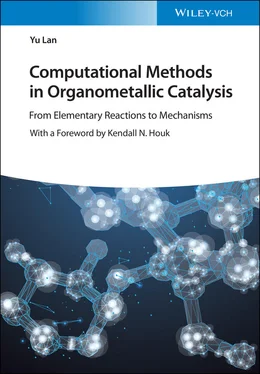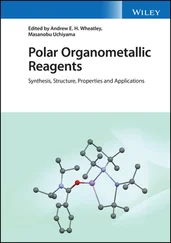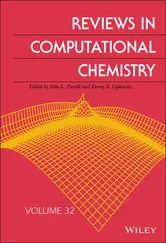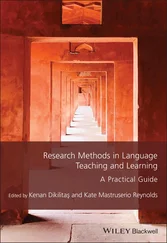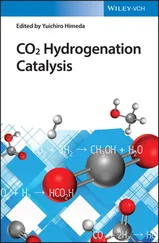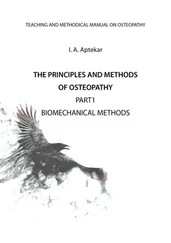Yu Lan - Computational Methods in Organometallic Catalysis
Здесь есть возможность читать онлайн «Yu Lan - Computational Methods in Organometallic Catalysis» — ознакомительный отрывок электронной книги совершенно бесплатно, а после прочтения отрывка купить полную версию. В некоторых случаях можно слушать аудио, скачать через торрент в формате fb2 и присутствует краткое содержание. Жанр: unrecognised, на английском языке. Описание произведения, (предисловие) а так же отзывы посетителей доступны на портале библиотеки ЛибКат.
- Название:Computational Methods in Organometallic Catalysis
- Автор:
- Жанр:
- Год:неизвестен
- ISBN:нет данных
- Рейтинг книги:4 / 5. Голосов: 1
-
Избранное:Добавить в избранное
- Отзывы:
-
Ваша оценка:
- 80
- 1
- 2
- 3
- 4
- 5
Computational Methods in Organometallic Catalysis: краткое содержание, описание и аннотация
Предлагаем к чтению аннотацию, описание, краткое содержание или предисловие (зависит от того, что написал сам автор книги «Computational Methods in Organometallic Catalysis»). Если вы не нашли необходимую информацию о книге — напишите в комментариях, мы постараемся отыскать её.
Computational Methods in Organometallic Catalysis — читать онлайн ознакомительный отрывок
Ниже представлен текст книги, разбитый по страницам. Система сохранения места последней прочитанной страницы, позволяет с удобством читать онлайн бесплатно книгу «Computational Methods in Organometallic Catalysis», без необходимости каждый раз заново искать на чём Вы остановились. Поставьте закладку, и сможете в любой момент перейти на страницу, на которой закончили чтение.
Интервал:
Закладка:
9 9 Foresman, J.B., Head‐Gordon, M., Pople, J.A. et al. (1992). Toward a systematic molecular orbital theory for excited states. Journal of Chemical Physics 96 (1): 135–149.
10 10 Bartlett, R.J. and Purvis, G.D. (1978). Many‐body perturbation‐theory, coupled‐pair many‐electron theory, and importance of quadruple excitations for correlation problem. International Journal of Quantum Chemistry 14: 561–581.
11 11 Møller, C. and Plesset, M.S. (1934). Note on an approximation treatment for many‐electron systems. Physical Review 46: 618–622.
12 12 Pople, J.A., Binkley, J.S., Seeger, R. et al. (1976). Theoretical models incorporating electron correlation. International Journal of Quantum ChemistrySupply 10: 1–19.
13 13 Pople, J.A., Seeger, R., Krishnan, R. et al. (1977). Variational configuration interaction methods and comparison with perturbation theory. International Journal of Quantum Chemistry 12 (Suppl 11): 149–163.
14 14 Head‐Gordon, M., Pople, J.A., Frisch, M.J. et al. (1988). MP2 energy evaluation by direct methods. Chemical Physics Letters 153: 503–506.
15 15 Raghavachari, K. and Pople, J.A. (1978). Approximate 4th‐order perturbation‐theory of electron correlation energy. International Journal of Quantum Chemistry 14: 91–100.
16 16 Pople, J.A., Head‐Gordon, M., and Raghavachari, K. (1987). Quadratic configuration interaction – a general technique for determining electron correlation energies. Journal of Chemical Physics 87: 5968–5975.
17 17 Curtiss, L.A., Raghavachari, K., Redfern, P.C.V. et al. (1998). Gaussian‐3 (G3) theory for molecules containing first and second‐row atoms. Journal of Chemical Physics 109: 7764–7776.
18 18 Nyden, M.R. and Petersson, G.A. (1981). Complete basis set correlation energies. I. The asymptotic convergence of pair natural orbital expansions. Journal of Chemical Physics 75: 1843–1862.
19 19 Petersson, G.A., Bennett, A., Tensfeldt, T.G. et al. (1988). A complete basis set model chemistry. I. The total energies of closed‐shell atoms and hydrides of the first‐row atoms. Journal of Chemical Physics 89: 2193–2218.
20 20 Petersson, G.A. and Al‐Laham, M.A. (1991). A complete basis set model chemistry. II. Open‐shell systems and the total energies of the first‐row atoms. Journal of Chemical Physics 94: 6081–6090.
21 21 Martin, J.M.L. and Oliveira, G.de. (1999). Towards standard methods for benchmark quality ab initio thermochemistry – W1 and W2 theory. Journal of Chemical Physics 111: 1843–1856.
22 22 Parthiban, S. and Martin, J.M.L. (2001). Assessment of W1 and W2 theories for the computation of electron affinities, ionization potentials, heats of formation, and proton affinities. Journal of Chemical Physics 114: 6014–6029.
23 23 Raghavachari, K. and Pople, J.A. (1981). Calculation of one‐electron properties using limited configuration‐interaction techniques. International Journal of Quantum Chemistry 20: 67–71.
24 24 Gauss, J. and Cremer, D. (1988). Analytical evaluation of energy gradients in quadratic configuration‐interaction theory. Chemical Physics Letters 150: 280–286.
25 25 Salter, E.A., Trucks, G.W., Bartlett, R.J. et al. (1989). Analytic energy derivatives in many‐body methods. I. First derivatives. Journal of Chemical Physics 90: 1752–1766.
26 26 Cížek, J. (1969). Correlation and effects in atoms molecules. Advances in Chemical Physics 14: 35.
27 27 Scuseria, G.E. and Schaefer, H.F. III (1989). Is coupled cluster singles and doubles (CCSD) more computationally intensive than quadratic configuration‐interaction (QCISD)? Journal of Chemical Physics 90: 3700–3703.
28 28 Purvis, G.D. III and Bartlett, R.J. (1982). A full coupled‐cluster singles and doubles model – the inclusion of disconnected triples. Journal of Chemical Physics 76: 1910–1918.
29 29 Scuseria, G.E., Janssen, C.L., and Schaefer, H.F. III (1988). An efficient reformulation of the closed‐shell coupled cluster single and double excitation (CCSD) equations. Journal of Chemical Physics 89: 7382–7387.
30 30 Watts, J.D., Gauss, J., and Bartlett, R.J. (1993). Coupled‐cluster methods with noniterative triple excitations for restricted open‐shell Hartree–Fock and other general single determinant reference functions. Energies and analytical gradients. Journal of Chemical Physics 98: 8718.
31 31 Strutt, J.W. and Rayleigh, L. (1894). Theory of Sound, 2e. London: Macmillan.
32 32 Pople, J.A., Head‐Gordon, M.D., Fox, J.K. et al. (1989). Gaussian‐1 theory: a general procedure for prediction of molecular energies. Journal of Chemical Physics 90: 5622–5629.
33 33 Curtiss, L.A., Raghavachari, K.G., Trucks, W. et al. (1991). Gaussian‐2 theory for molecular energies of first‐ and second‐row compounds. Journal of Chemical Physics 94: 7221–7230.
34 34 Curtiss, L.A., Redfern, P.C., Raghavachari, K. et al. (2007). Gaussian‐4 theory. Journal of Chemical Physics 126: 084108.
35 35 Ochterski, J.W., Petersson, G.A., Montgomery, J.A. et al. (1996). A complete basis set model chemistry. V. Extensions to six or more heavy atoms. Journal of Chemical Physics 104: 2598–2619.
36 36 Hohenberg, P. and Kohn, W. (1964). Inhomogeneous electron gas. Physical Review 136: B864–B871.
37 37 Kohn, W. and Sham, L.J. (1965). Self‐consistent equations including exchange and correlation effects. Physical Review 140: A1133–A1138.
38 38 Slater, J.C. (1974). The Self‐Consistent Field for Molecular and Solids, Quantum Theory of Molecular and Solids, vol. 4. New York: McGraw‐Hill.
39 39 Perdew, J.P. and Schmidt, K. (2001). Jacob's ladder of density functional approximations for the exchange‐correlation energy. AIP Conference Proceedings 577: 1–20.
40 40 Perdew, J.P., Ruzsinszky, A., Constantin, L.A. et al. (2009). Some fundamental issues in ground‐state density functional theory: a guide for the perplexed. Journal of Chemical Theory and Computation 5 (4): 902–908.
41 41 Becke, A.D. (1988). Density‐functional exchange‐energy approximation with correct asymptotic‐behavior. Physical Review A 38: 3098–3100.
42 42 Lee, C., Yang, W., Parr, R.G. et al. (1988). Development of the Colle–Salvetti correlation‐energy formula into a functional of the electron density. Physical Review B 37: 785–789.
43 43 Perdew, J.P., Burke, K., Ernzerhof, M. et al. (1996). Generalized gradient approximation made simple. Physical Review Letters 77: 3865–3868.
44 44 Perdew, J.P. (1986). Density‐functional approximation for the correlation energy of the inhomogeneous electron gas. Physical Review B 33: 8822–8824.
45 45 Zhao, Y. and Truhlar, D.G. (2006). A new local density functional for main‐group thermochemistry, transition metal bonding, thermochemical kinetics, and noncovalent interactions. Journal of Chemical Physics 125: 194101–194118.
46 46 Tao, J.M., Perdew, J.P., Staroverov, V.N. et al. (2003). Climbing the density functional ladder: nonempirical meta‐generalized gradient approximation designed for molecules and solids. Physical Review Letters 91: 146401.
47 47 Van Voorhis, T. and Scuseria, G.E. (1998). A never form for the exchange‐correlation energy functional. Journal of Chemical Physics 109: 400–410.
48 48 Becke, A.D. (1993). Density‐functional thermochemistry. III. The role of exact exchange. Journal of Chemical Physics 98: 5648–5652.
49 49 Becke, A.D. (1997). Density‐functional thermochemistry. V. Systematic optimization of exchange‐correlation functionals. Journal of Chemical Physics 107: 8554–8560.
50 50 Cohen, A.J. and Handy, N.C. (2001). Dynamic correlation. Molecular Physics 99: 607–615.
51 51 Adamo, C. and Barone, V. (1999). Toward reliable density functional methods without adjustable parameters: the PBE0 model. Journal of Chemical Physics 110: 6158–6169.
Читать дальшеИнтервал:
Закладка:
Похожие книги на «Computational Methods in Organometallic Catalysis»
Представляем Вашему вниманию похожие книги на «Computational Methods in Organometallic Catalysis» списком для выбора. Мы отобрали схожую по названию и смыслу литературу в надежде предоставить читателям больше вариантов отыскать новые, интересные, ещё непрочитанные произведения.
Обсуждение, отзывы о книге «Computational Methods in Organometallic Catalysis» и просто собственные мнения читателей. Оставьте ваши комментарии, напишите, что Вы думаете о произведении, его смысле или главных героях. Укажите что конкретно понравилось, а что нет, и почему Вы так считаете.
